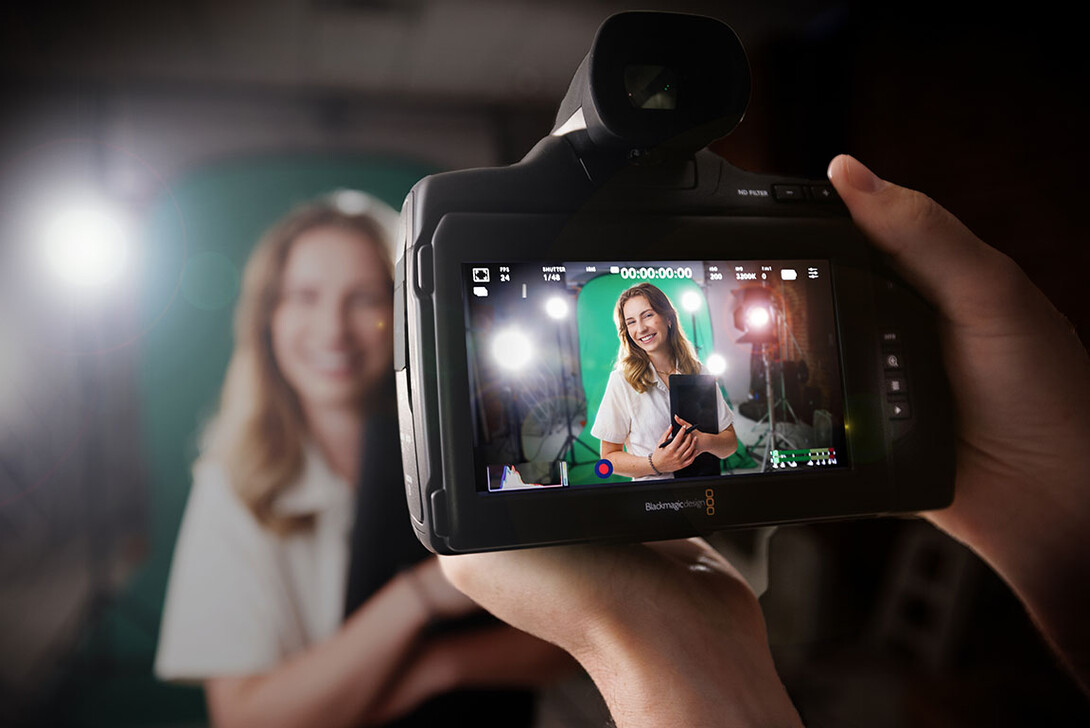
A team of Huskers helped bring “Mission: Impossible – Dead Reckoning Part One” to the big screen, part of a growing partnership between the University of Nebraska–Lincoln’s Johnny Carson Center for Emerging Media Arts and Lola Visual Effects.
Trent Claus, a graduate of the university and visual effects supervisor at Lola Visual Effects, hired students as interns for the company for the first time in January 2022. In the year and half since, seven Carson Center graduates have gone from interns to full-time employees of the company. The center’s first cohort graduated in May.
Claus said he was interested in offering opportunities for students to work in the industry because of what it would have meant to him when he was at that point in his career. He studied graphic design and illustration because it seemed like the closest field to what he envisioned doing.
“When I was coming up, it felt like making movies was something far away people did,” Claus said. “I know there’s talent and interest amongst students here, so I thought it would be a good opportunity for everyone. I know I would have jumped at an opportunity back then to speak to or listen to someone working in the movie industry or learn about entry-level jobs or apply for one of those jobs. It would have been a big thing for me, so it seemed only fair that I try to offer as many opportunities as I can.”
Sophia Stueven, a May 2023 graduate from Pierre, South Dakota, who now works full time for Lola, said she met Claus when he came to Lincoln to speak on campus. A freshman at the time, Stueven was aware of his work, and when she learned of the job opportunity, she immediately knew she wanted to apply.
“It’s a crazy opportunity that they work on these huge movies,” she said. “It kind of seemed like a no-brainer. If something like that is an opportunity, I’d want to try my hand, see if I could do it.”
Stueven said the team of Huskers worked on “Mission: Impossible” for about a year and saw the movie together when it hit theaters July 12.
“Most people get up and leave at the end, but we are all sitting and waiting,” she said. “Sometimes you don’t know if your name is going to be at the end. Then you see it scroll up and everyone’s videoing and screaming in the theater. It was so fun.”
Prior to “Mission: Impossible,” the team worked on “Thor: Love and Thunder,” “Obi-Wan Kenobi” and “The Mandalorian.”
Claus said over the course of their time, they started learning skills like rotoscoping, clean plating and compositing. Rotoscoping involves separating objects in a frame so they can be manipulated individually, like separating a person from a background to make a change to their image. Clean plating entails things like replacing the background of footage where something has been removed. Compositing is combining different elements, from live action footage to computer-generated creatures to background explosions, into a final shot.
“It’s a great opportunity to experiment with some of the more modern technology and means of storytelling,” Claus said.
Working on such high-profile projects meant Stueven’s work was held to the highest standards, she said, and those demands helped her refine her skills. Since she’s been with Lola Visual Effects, she said she’s gradually progressed to more complicated tasks. She’s now at a stage where some of her final work appears on screen.
“If you’re compositing, what you see on screen is what you worked on,” Stueven said. “Those more in-between steps, maybe you wouldn’t see your actual work. It’s worked on top of.”
Now that she’s a full-time employee, Stueven said she’d like to learn more about de-aging footage of actors in films. Lola de-aged Samuel L. Jackson for “Captain Marvel,” Michael Douglas in “Ant-Man” and multiple characters in “Avengers: Endgame.”
Stueven said her supervisors at Lola helped her grow and develop her ability on all of these tasks.
“They always make us feel like we can ask any questions,” she said. “It’s a really welcoming learning environment.”
View this post on Instagram
Stueven also worked for Husker Athletics as a student and said it was a great introduction to a professional environment where she could get helpful critiques. The videos she helped create there were some of her first experiences with visual effects, and she said it helped spark her interest in the field.
These work experiences, alongside visual effects classes at the Carson Center, gave her work to show her skills, which is crucial to getting a job in the industry.
“They’re going to look at your portfolio first, and if you don’t have a good portfolio, they just skip right past you right away, so getting opportunities to make projects you’re proud of is everything,” Stueven said.
Claus said he hopes to continue building the relationship with the university and hiring students as part of the program.
“I believe it’s one of the few opportunities that provide artists with an artistic outlet and also steady employment,” Claus said. “You can do art and get paid for it. To be able to live your life and make art, that’s the goal.”







